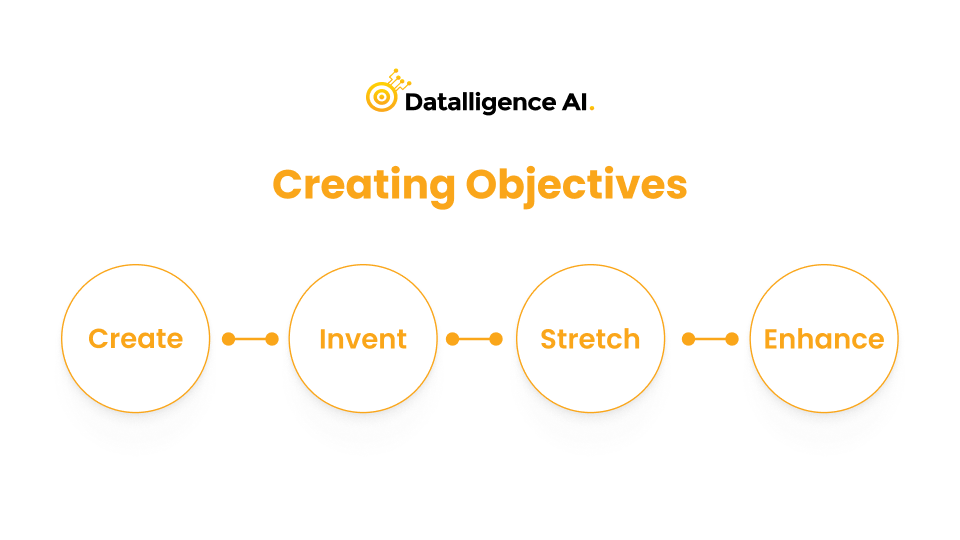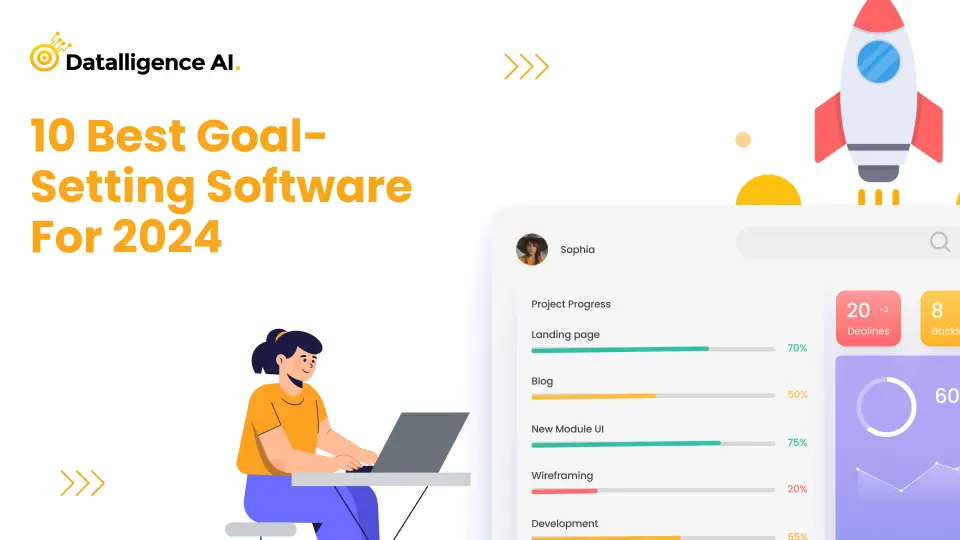OKR (Objectives and Key Results)
Objective and Key Results is a goal-setting framework that helps in strategy execution. OKR (Objectives & Key Results) is a simple yet powerful goal-setting tool that can be used by any organization or for any purpose.
Objective – It is what we want to achieve within a specific timeline.
Example: Increase brand awareness by Q4
Key Result – is a metric and quantitative by which we can measure the progress towards the objective set.
There are plenty of traditional planning methods, but OKRs are incredibly unique and agile, and they are frequently set, tracked, and re-evaluated, usually quarterly. OKRs are a simple, fast-cadence process that engages each team’s perspective and creativity. OKR exists to create alignment and to set the cadence for the organization.
History of OKRs
The history of OKRs travels back to 1954 and with Peter Ducker, the father of management. In his book “the practice of management, ” he writes about how important aspirational objectives are to the organization.
Later, Andy Grove from Intel who was also a visionary in Intel’s shift from memory chips to microprocessors wanted to implement a framework that creates accountability and ownership among team members. He implemented a framework called iMBO which is the current OKRs. Andy Grove ensured that the OKRs in Intel can mix both top-down and bottom-up involvement.
Grove says: “A successful iMBO system needs only to answer two questions:
- Where do I want to go? (The answer provides the Objective)
- How will I pace myself to see if I am getting there? (This gives milestones / key results)
John Doerr joined Intel in 1974, where he practically worked along with Ducker and with OKRs Later he introduced OKR to Google’s founders, Larry Page, and Sergey Brin, and they implemented OKRs at Google. Today, most organizations follow OKRs to ensure strategy execution, OKRs are the Swiss army knives suited for all-purpose and cultures.
Creating Objectives
Objectives are the directions to the goal, and they must be well thought out before writing it down. Well-drafted objectives will answer how it will solve the “Why” and what it is trying to achieve.
Objectives must be simple yet communicated powerfully and they must be understood across all levels. Keep it aspirational yet achievable. Having said that, before we draft objectives, there should have a clear understanding of what we are trying to achieve. Well-written OKRs help in achieving the long-term goal and connects the team.

Create
Identify Objectives that will help you create, new processes or methods to achieve the organizational goal
Invent
OKRs that support innovation and intervention needed for the product, process, and people
Stretch
Stretch objectives help in understanding the level of aspirations required to achieve the goal
Enhance
Through new enhancements, we can identify Improvements that bring in better quality or better Outcomes
Before starting with Company objectives, it is important to have the Vision, Mission, and strategy in place. Then we can proceed further and start finalizing your objectives. Timelines for company objectives can vary. The company objectives can be drafted with a quarterly cadence, most preferred.
Key Learning: OKR is a framework for CEOs to align people with company objectives. And build the habit of thinking, planning, and executing what it takes to achieve company objectives. Many organizations have learned it an extremely hard way after failing several times. And we passionately believe that implementing OKR should be to get the execution done & support growth, not to do the goal-setting exercise 4 times a year
Objectives can be based on
- The strategic bets you are chasing
- Based on competition
- Technological & market condition changes.
- Customer-centric objectives
The best-written objectives should not be more than 3 to 5 and should be able to guide the entire organization.
- List objectives and discuss with the key stakeholders to finalize the final 3 to 5 company objectives.
- All the objectives should be mutually exclusive.
- These objectives should be able to communicate the meaning and purpose to the Department heads, managers, and individuals.
For Example: Market Expansion OKR
Expanding a new market starts with a complete set of new activities. Writing OKRs to achieve those aspirational objectives will be the right start. Increasing the number of customers and retaining them will be the most important objective of the team.
Objective: Become the choice of the customer in the MENA region
- Key Result – Increase customer satisfaction ratings by 20% within the first year of implementing this objective
- Key Result – Achieve a 15% increase in customer loyalty within the first year of implementing this objective.
- Key Result – Increase market share in the MENA region by 10% within the first year of implementing this objective.
A few Challenges you would face
- Avoid creating business-as-usual OKR
- Confusion around Company-level Objectives with revenue targets.
- Having too many objectives
- Objectives are too challenging or not challenging enough
Science of Key Results
Writing the key results are the next key factor. If we do not spend time creating the right metrics the entire OKR implementation will not be successful.
- Key Results are the measures and milestones that help to achieve the objective
- The best practice is to have a maximum of 3 to 5 Key results for Each Objective.
- Should be Specific and time-bound.
- Aggressive, yet realistic.
- Measurable and verifiable.
You can fit Key results into three categories as per John Doerr

Inputs
Input Key results are those we can control, increase, or decrease. Right inputs determine the outcome
Examples: Number of calls made per day; the number of parts manufactured per day
Output
Output Key Results are the result of the input Key Results. Output Key results provide a clear target and measures.
Examples: Achieve sales revenue, Achieve production target
Outcomes
Outcome Key Results are the next step to the Output Key Result. Though Outputs gives the result, the outcome will help us to give a clear clarity on how we are progressing (before and after)
Example – Increase revenue by 30%
Example OKR
Objective: Increase customer base to achieve the target of the MENA market
- Input Key Result: Increase the Number of calls made per day to 100.
- Output Key Result: Achieve sales revenue of 20
- Outcome Key Result: Increase Sales by 30%
Outcomes can be more detailed and complex than outputs. But a good outcome metric will give us a clear indication of how Input or Output must be measured. The Trio makes it powerful. If you can write effective Input and Output Key results while you are getting started, Outcome Key Results will surface.
Conclusion
OKRs are one such framework that is well-proven and adopted by organizations. Various use cases are available to substantiate the successful implementation of OKRs. Datalligence OKR platform is designed to execute the right OKRs to achieve the goal.
Datalligence team supports writing OKRs as well as onboarding the OKRs in the platform. Various dashboards can help organizations to understand where they are progressing and the gap between the execution. The best OKR software is the one that promotes conversations around performance and enables multi-directional feedback. Talk to our OKR coaches today to start your implementation. Our experts have implemented OKRs for more than 500+ teams. Book your free consulting session to understand more about Datalligence OKR Software or try Datalligence for “Free”











